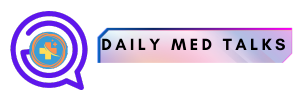
Autism spectrum disorder (ASD) affects about 1 in 31 children aged 8, according to reports by the CDC. Early detection is critical if parents give the child timely interventions that help improve long-term developmental achievements. Speech and language tests are one of the most striking aspects of autism testing. They allow experts to realize a child’s communicative capacity and guide families to the right interventions.
Continue reading to discover how speech and language evaluations support autism assessment services and why they are crucial for accurate diagnosis.
Why Speech and Language Evaluations Matter in Autism Assessment Services
Communication challenges are one of the earliest and common indicators of ASD. Most autistic children have difficulty communicating verbally, nonverbally, and even socially. Based on approximated figures in studies, 30% of autistic children remain minimally verbal at school age, and speech evaluation is therefore extremely crucial in autism assessment clinics.
Speech and language evaluation evaluates the main areas such as:
- Receptive language (interpretation of words and commands uttered
- Expressive language (use of words to speak)
- Pragmatic language (use of words in a proper way in everyday contexts)
- Nonverbal communication (eye contact, gestures, facial expressions)
From these domains’ tests, professionals can establish whether communication delay follows a development pattern of ASD or another disease.
5 Ways Speech and Language Tests Help Autism Testing
Speech and language tests go beyond delay detection; they inform us about how a child talks, learns to speak, and communicates with people. These are five significant ways in which these tests are helpful in autism testing and assist families in the right direction of intervention.
1. Identify Communication Delays
Language and speech evaluations determine whether or not a child is struggling with comprehension and utilization of language. Through evaluation of receptive and expressive abilities, clinicians can decide on delays characteristic of autism. This early insight ensures families move toward the right interventions without unnecessary delays.
2. Evaluate Social Communication Skills
Children with autism tend to have problems using language in real life. Evaluations focus on pragmatic language, such as maintaining conversations, making eye contact, or using gestures. This information on how a child relates to others is essential, making it a fundamental element in autism assessment services.
3. Distinguish Autism from Other Disorders
Not all children who have a speech delay are autistic, so accurate assessment is crucial. Speech-language pathologists can differentiate between autism and other conditions, such as hearing loss or language disorder of development. This careful analysis prevents misdiagnosis and ensures children receive the most appropriate support.
4. Identify Strengths and Weaknesses
Tests do not just reveal difficulties; they also demonstrate a child’s potential. Some children have a good vocabulary but struggle with social sign awareness and are also verbal. Once one knows the deficits and the strengths, then autism becomes more precise and targeted.
5. Champion Multidisciplinary Diagnosis
Autism assessment is best with a team. Speech and language assessment gives valuable information based on psychological and medical assessments. The results provide an overall development picture, allowing families to get an accurate diagnosis and a clear treatment plan.
Conclusion
Speech and language testing are not included in Autism assessment services; these are a window into understanding how the child is in the world. Pairing these testing services with full-spectrum autism evaluation gives families more concrete answers and practical strategies for supporting their child’s growth.












